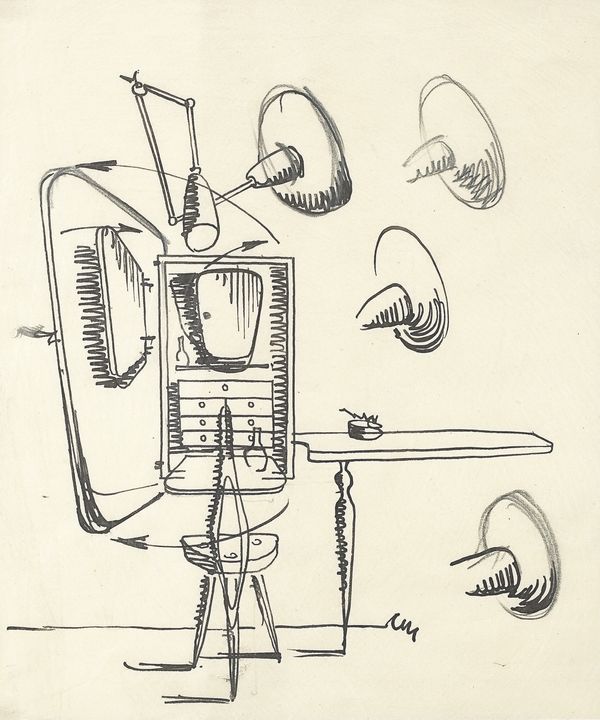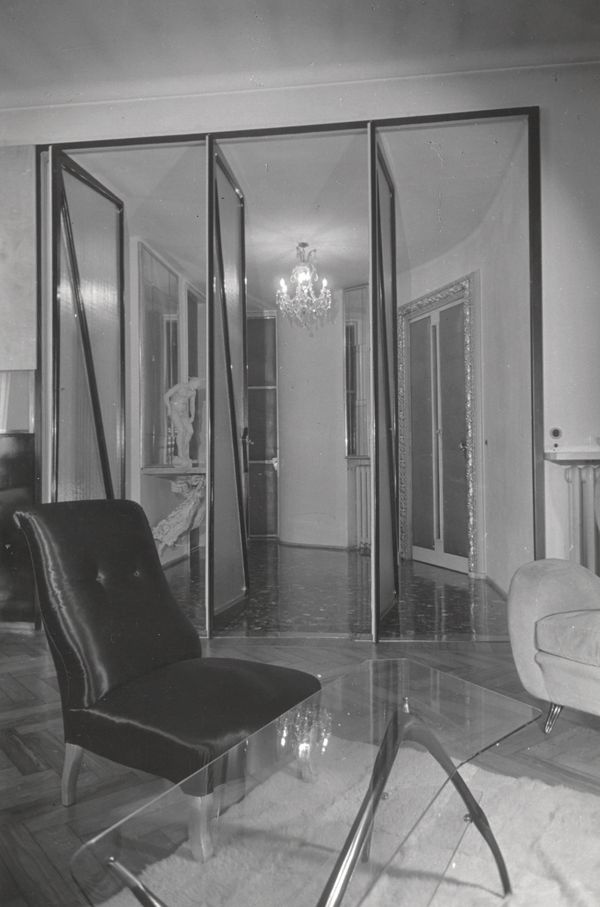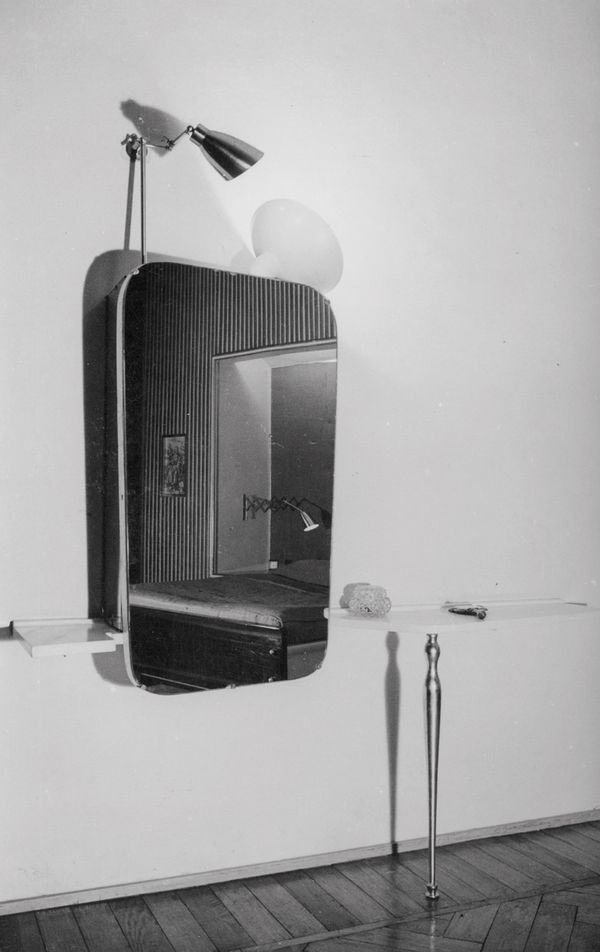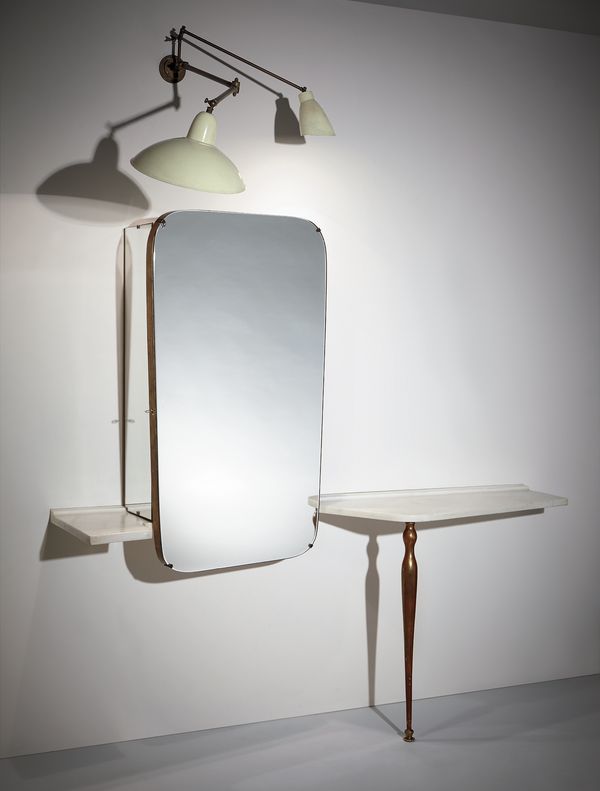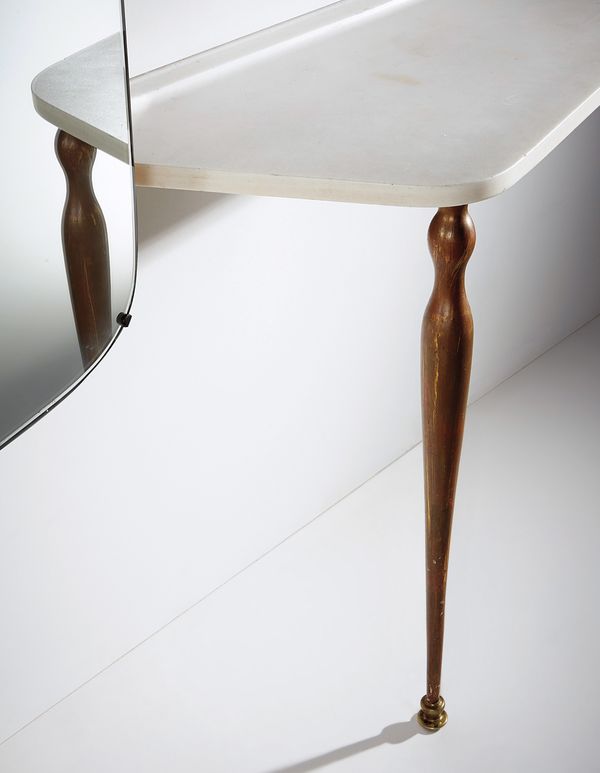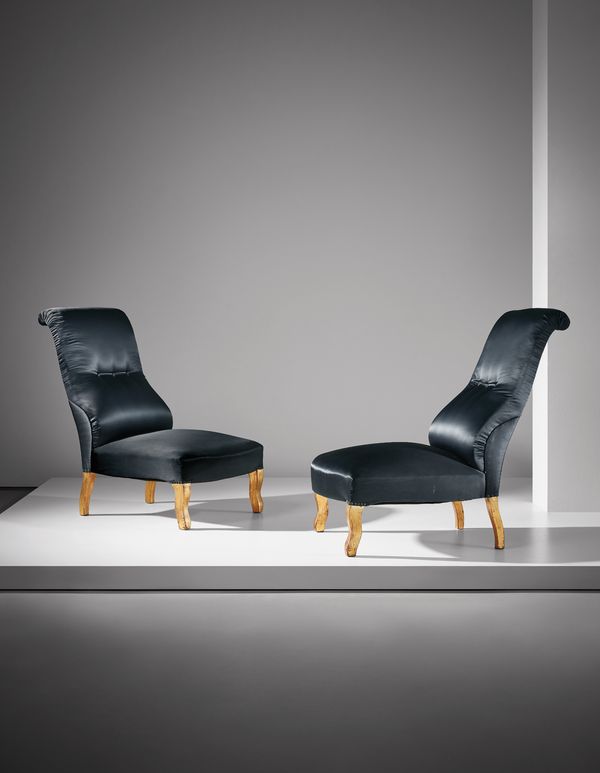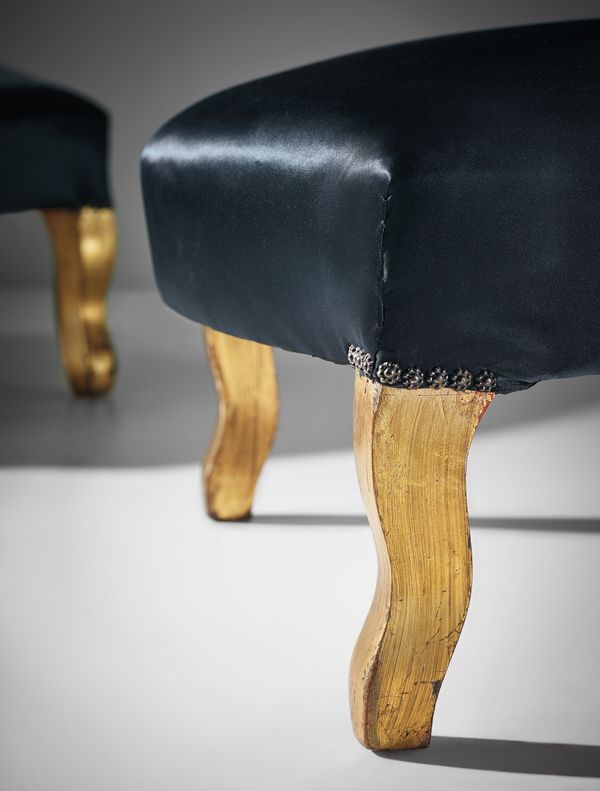A preliminary sketch by Carlo Mollino for the "specchio-armadio". Courtesy The Recanati-Kaplan Collection and Museo Casa Mollino
The Ada and Cesare Minola House is one of the most important interior projects of Carlo Mollino's entire career. The numerous prospectuses and technical drawings created between 1944 and 1946 testify to Mollino's great interest in the project, despite the difficulties from the ongoing World War and the continuous bombardments of his city, Turin.
The relationship between the architect and his client benefited from particular circumstances: Ada Minola was in fact an artist who painted and designed jewels and who, more importantly, shared with Mollino a deep knowledge of Art Nouveau and its culture. The project is therefore made special by the rarity of a refined commissioner used to living closely with art; a special client who would inspire Mollino to create designs up until 1964.
Interior of the Ada and Cesare Minola House, Turin, showing our two Evening Sale lots in situ. Courtesy Museo Casa Mollino
In 1948 the Minola house was featured in depth in Domus, where Gio Ponti described "furniture of precious manufacture, delicate and refined," emphasizing the "artistic value" of the project and comparing the elements from the interior to the creations originating from "the free enthusiasm for the extraordinary ideals of ancient times."
The one-legged "specchio-armadio" from the bedroom is a clear reference to baroque corner units, a connection which Mollino reinforced with the use of gilding. The structure was dealt with in a new way. The overall appearance of the unit is disjointed and free, like a sculpture. The configuration of the shelves, made of exceptionally hand-shaped marble, appear suspended while the mirrored door hides a makeup cabinet fitted with a second, smaller, "private" mirror.
Carlo Mollino Unique "specchio-armadio" and adjustable wall light, from the bedroom of the Ada and Cesare Minola House, Turin, 1944-1946
Collectively, these elements constitute a unique work presenting a high level of engineering, as found in some musical instruments. Of equal value, the engineering of the lighting involves the use of a unit that is separated from the main body of the piece. With various joints and shades of different shapes, the wall light allows for the adjustment of its intensity and rays in any direction desired. Sketches by the architect's own hand testify to the ardor with which he created this part of Ada's interior in 1945.
Placed between the yellow-gold velvet armchairs and the purple velvet curtains of the living room, the two lounge chairs in black fabric were highlighted by Ponti in connection to the "natural and romantic dynamism of the form." The two were in fact displayed in front of an etching illustrating a waterfall. The use of black symbolised the importance of these formidable objects (the table facing the chairs, the marble shelf, the table legs and the legs of the chairs were also black).
Carlo Mollino Unique pair of lounge chairs, from the living room of the Ada and Cesare Minola House, Turin, 1944-1946
The inclusion of a pair of chairs that recall a nineteenth-century aesthetic can be attributed to Mollino's ability to create an interior that tells a story, glorifying the relics of the family's past (furniture, works of art and antique rugs) always found in important aristocratic residences.
The two buttons on the curved seatback upholstery evoke a pair of worried eyes, as if they belonged to a surrealist creature with golden legs.
